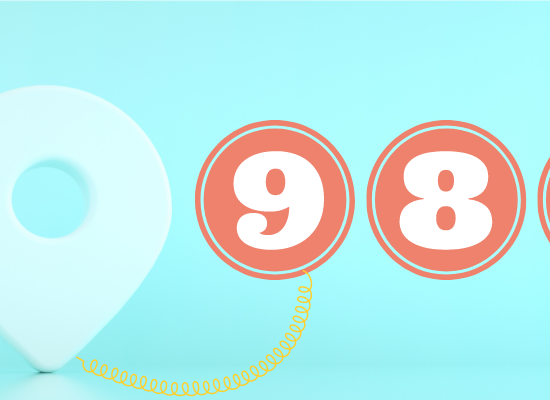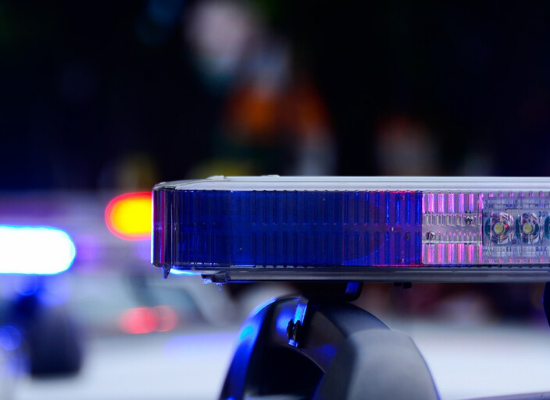
Stephanie Hepburn is a writer in New Orleans. She is the editor in chief of #CrisisTalk. You can reach her at .
Victor Armstrong, MSW, says, as it exists now, the behavioral health system is inherently flawed for African Americans, pointing out that treatment modalities and the way they’re framed “don’t take into account the nuances of race, culture, or ethnicity.” Armstrong, who is the director of the North Carolina Division for Mental Health, Developmental Disabilities, and Substance Abuse Services, says Black boys and men are often incorrectly diagnosed with paranoid personality disorder, Schizophrenia, and antisocial personality disorder. The reason is twofold: the framework itself comes from the perspective of White men and their experiences, and a lack of cultural competency.
“If you went to the DSM criteria for paranoid personality disorder, I’d likely fit 4 out of 7 on any given day,” he says. “Black people often feel denied opportunities based on how others perceive us, and we might read negative intent in people’s interactions with us.”
However, it’s not paranoia Armstrong is experiencing, but a reflection of what it’s like to be a Black man in America. Non-Black people may view his vigilance and fear of police as unfounded because their life experiences haven’t been the same. Statistics show a different story, illustrating the dangers of police interaction for people of color and those experiencing a mental health crisis. Put them together—a person of color in crisis, notes Armstrong, and it’s a double whammy of vulnerability.
According to the Washington Post’s police shooting database, 5,772 people have been shot and killed by a police officer in the line of duty since Jan. 1, 2015. Nearly one fourth were African American, with the vast majority (96.5%) Black and male. Police kill Black Americans at more than twice the rate of White Americans, 33 per million compared to 13 per million, respectively.
People in mental health crisis are also highly at risk of death during a police interaction; in fact, 23% of people killed by police were identified as having a mental illness. Though not as stark as the overall number of Black people killed by police, those who are Black and have a psychiatric illness are also disproportionately affected, making up 15% of people with mental illness killed by police.
When in a psychiatric crisis, who a person of color encounters, says Armstrong, matters. At present, most people call 911 if they see a person in a mental health crisis, not the SAMHSA-funded National Suicide Prevention Lifeline (1-800-273-TALK | 1-800-273-8255), commonly referred to as the Lifeline, or other crisis lines. He hopes change is on the horizon with 988, the nationwide three-digit number that mirrors 911 for behavioral health and suicide crises that must be available nationwide no later than in July 2022, requiring all 988 calls to go to the Lifeline. Some mobile providers have already gone live, with T-Mobile having made 988 available to its customers on November 20. The potential spike in call volume, Armstrong points out, will need adequate funding to ensure Lifeline member call centers can answer every call.
Determining exactly how call volume demand will change is impossible; there are far too many variables not yet defined, including how many states won’t only adopt the number but also use it to advance the coordination of their crisis care system. Mental health experts estimate 988 call volume could ultimately be upward of 40 million if the three-digit number indeed diverts mental health crisis calls from 911 and local, county, and state crisis lines.
The National Emergency Number Association reports Americans make about 240 million 911 calls per year. How many are mental health calls or translate to a police response to mental health crises is unclear, but the Treatment Advocacy Center reported in 2019 that law enforcement spent an average of 10% of their total budgets in 2017 responding to and transporting people with mental illness. Mental health crisis experts extrapolate that it’s likely at least 10% of 911 calls are mental health-related, resulting in about 24 million calls. They then add the 13-15 million calls that go to local, county, and state crisis lines, and the 2.5-3 million they estimate will be the final Lifeline call volume for 2020. It’s not an exact science, pointing to another gap: the lack of transparency of 911 and call center data.
In the meantime, 911 remains the number people call when they identify a psychiatric crisis. This increases the likelihood that a person in crisis will interact with police, Armstrong says, even in communities with a comprehensive crisis care system.
When breaking down the pathways into most communities’ crisis systems, it’s easy to see why police end up as the default mental health provider. A role Ron Bruno, executive director of CIT International, has shared law enforcement don’t want. He told #CrisisTalk in 2019 that while law enforcement are essential partners in mental healthcare, they should not be the de facto mental health crisis response system.
“It fell to us, but we aren’t the best solution or help to a person in an escalated state,” said Bruno.
Bruno told us that mental healthcare shouldn’t come in a police car, and crises should be treated in the “most compassionate and least intrusive manner.” Yet, notes Armstrong, most communities don’t have a robust crisis care continuum, which means in many parts of the country, law enforcement will continue to be the entry point into the mental healthcare system until there’s sufficient alternative infrastructure in place. It concerns Armstrong that in the meantime, many people in need, and their loved ones, will not reach out to 911, which he says would be detrimental in rural and other remote areas. On social media and even at mental health conferences, he’s seen advocates and mental health professionals directly say to stop calling 911 if someone is in a psychiatric crisis. “I see more and more active pushback to law enforcement presence, but in North Carolina’s rural communities, our response is entirely built around calls to 911.”
The Washington Post reported in October that it’s in smaller areas, those with populations with less than 1 million, where fatal police shootings of people who are mentally ill are 39% more likely to happen. Armstrong hopes in implementing 988, the three-digit number for mental health and suicide crises that will launch in July 2022, states will build corresponding community infrastructures.
“988 has the potential to get around police interaction as long as there are meaningful alternatives like mobile crisis teams, so that call centers aren’t stuck sending law enforcement.”
However, Armstrong notes that many mobile crisis teams are not where they need to be to fill in the gaps nationwide, like in North Carolina. “They’re often under-resourced, resulting in slow response times,” he says. Telling people not to call 911 without an adequate solution leaves people in crisis and their families with no help at all.
Some communities, like New York City, will soon pilot new responder models for 911 mental health calls, replacing law enforcement with mental health crisis workers. Currently, NYPD officers and FDNY emergency medical technicians respond to 911 calls. According to the city press release on November 10, they do so “regardless of the severity of health needs, whether a crime is involved, or whether there is imminent risk of violence.” The pilot, launching in February, will dispatch mental health teams that include a mental health professional and an EMS crisis worker in two high-need precincts. (NYPD officers and FDNY EMS EMTs will continue to respond to 911 calls in precincts other than the two in the pilot.) Most mental health calls don’t need a police or EMS response, making it unclear why the city doesn’t dispatch mental health teams alone or why the city cannot divert 911 calls to mobile crisis teams.
The city did simultaneously announce in the press release that mobile crisis teams, often dispatched by NYC Well, will improve their response time by January, responding to urgent mental health situations within two hours citywide in the day and evening hours. The teams respond to urgent mental health needs roughly 21,000 times per year. Teams can include social workers, psychologists, psychiatrists, nurses, community liaisons, and peers. The latter, Armstrong says, is an underutilized work population nationwide. He also believes it’s the fastest route to mitigate the lack of Black and Hispanic mental health professionals in the field.
“You can train peers faster than psychiatrists, psychologists, or social workers,” he says, “In North Carolina, we have almost 4,000 certified peer support specialists, with roughly 1,500 who are currently unemployed. There is a ready workforce of peers available.”
Knowing that a person’s entry into the mental health system often comes in the back of a police car, some states have developed a Crisis Now “no wrong door” approach, where law enforcement do rapid drop-offs of people in crisis at nearby behavioral health facilities. “These partnerships have reaped positive outcomes,” says David Covington, LPC, MBA, president and CEO at RI International, “removing barriers to care, matching people to the level of services they need, and diverting them from sustained law enforcement engagement.” He’s also found, though, that the number of African Americans at RI International’s facilities often surpass the percentage they make up in the area. For example, African Americans make up 6% of the Maricopa County population and 15% of patients at the non-profit’s facilities in the area, a 2.3 times higher penetration rate. Washington State facilities have a 2.6 times higher penetration rate. “Does this reflect need or heavy law enforcement engagement?” Covington asks.
Armstrong suspects the penetration rate is partly because much of RI International’s facility population comes from police drop-offs and the high prevalence of law enforcement interfacing with people of color. However, he points out that behavioral health resources aren’t always accessible in marginalized communities. During his tenure as vice-president at Atrium Health, Armstrong and his colleagues layered heat maps of psychiatric crises and zip codes, which revealed crisis peaks in Charlotte’s economically deprived areas. That’s precisely where providers aren’t, he says.
“Without addressing this issue and making access to care much easier so that people can have their needs met earlier,” he says, “there’s an increased likelihood that a Black person’s first encounter with mental healthcare will continue to be in the back of a police car because they’re in crisis.”
Behavioral Health Link (BHL) in Georgia answers both the Lifeline and the Georgia Crisis & Access Line (GCAL | 1-800-715-4225). An analysis of call data in 2008 revealed that African Americans made up 24% of the callers to the Lifeline yet made up far more, 43% of callers, to GCAL even though they represented 33% of the state’s population. The number of calls to the Lifeline and GCAL differ, notes Covington, a partner in BHL, because of how they’re marketed, with the latter integrated in the local healthcare system and driven by the community. The 1.3 times higher penetration rate to GCAL, points out Armstrong, could similarly have represented the lack of needed services in marginalized communities. Even when matched with care, marginalized populations face biases. “Structural racism bleeds into every system,” says Armstrong, “including criminal justice, education, employment, healthcare, and housing.”
The consequences of structural racism are playing out in the coronavirus theater, with people of color disproportionately affected by the pandemic. As Dr. Rochelle Head-Dunham told us in October, “vulnerabilities to the virus aren’t inherent to a person’s race but because of the disadvantages U.S. systems have created.” Black and Hispanic people are dying at 2.3 and 1.5 times the rate of their White counterparts, respectively. According to The COVID Tracking Project dashboard at The Atlantic, African Americans in North Carolina make up 29% of coronavirus deaths even though they’re 21% of the population.
The fallout from the pandemic and corresponding physical distancing requirements is widespread and disproportionately affects people of color, with Black and Hispanic families likelier to experience food insufficiency, inability or difficulty paying for housing and household expenses, and higher unemployment. Armstrong says the widening gaps make it even more dire for states to disrupt the current behavioral health and crisis care systems and think outside the box to include community support.
“We have to look beyond traditional mental health providers,” he says, “and collaborate with faith-based organizations, community support groups, and social organizations to reduce demands on overextended professional medical and/or therapeutic resources for the foreseeable future.”
Rapid emergency regulatory and policy changes during the pandemic have allowed for mental health telehealth coverage, lowering mental health care barriers for many people. However, Armstrong says early data suggests historically marginalized groups use telehealth services and attend follow-up visits at lower rates than their White counterparts. He and his colleagues at the North Carolina Division for Mental Health, Developmental Disabilities, and Substance Abuse Services, have launched Hope4NC (1-855-587-3463), a helpline funded by the CARES Act and other federal grants to provide mental health and substance use services. “The hotline connects North Carolinians to mental health and resilience supports,” he says. “It’s available statewide, 24 hours a day, seven days a week, and includes a Crisis Counseling Program, which provides immediate crisis counseling services to people affected by the ongoing COVID-19 public health crisis.” Armstrong says there’s a myth long perpetuated in the mental health field that African Americans, particularly men, don’t want therapy and don’t want to engage in services. “That’s wrong,” he says.
“Society has taught us that the best way to navigate the world is to keep our mouths shut, heads down, and keep moving. It’s not that we don’t want treatment, but we want conversations to take into account the experience of being a Black man in America.”
Armstrong says that instead of seeking treatment from the traditional mental health system, where there’s often little to no racial or ethnic concordance, people of color may seek guidance at church or the local barbershop. In fact, barbershops across the country are joining the Confess Project, a community-led initiative started in 2016 that trains barbers as mental health advocates. To mental health providers, Armstrong asks that they not make assumptions based on their perceptions.
“Don’t ask me to come in and give me what you want me to have, in the way you want me to have it,” he says. “Instead, listen.”












